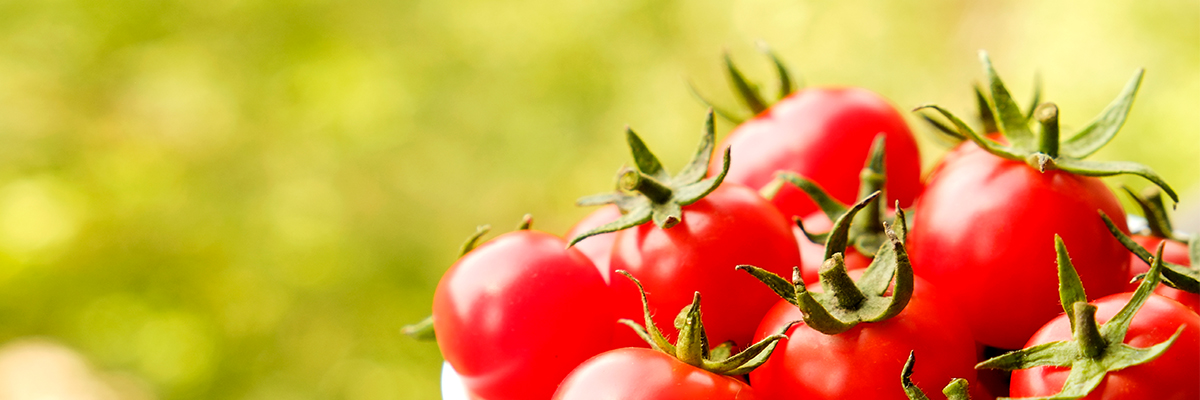Home-grown tomatoes
Can there be anything tastier and healthier than your own freshly-picked, delicious, home grown tomatoes? Sounds great but don't know where to start?
It's really simple, read on and you'll be able to enjoy a wonderful crop this summer!
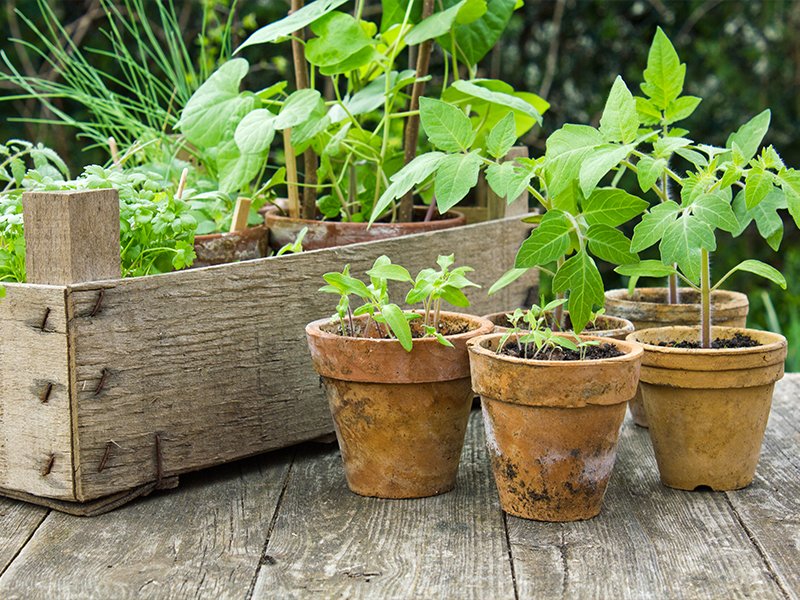
Why?
Tomatoes are fun to grow, and growing your own means you can be certain that you're providing your family with the freshest, chemical-free food!
If you haven’t germinated your own seed, begin with good-quality small plants which are already well-rooted in their pots. These will become available to buy from late March onwards.
Make sure that you’re starting with quality plants in varieties that you can rely on. Our experienced plant team are always happy to help you choose the varieties that are best for you - and help you with practical advice if you need that!
If you buy your plants before the frosts are finished, you can grow them on indoors or in a heated greenhouse to give them a great head-start and most likely an additional crop of tomatoes.
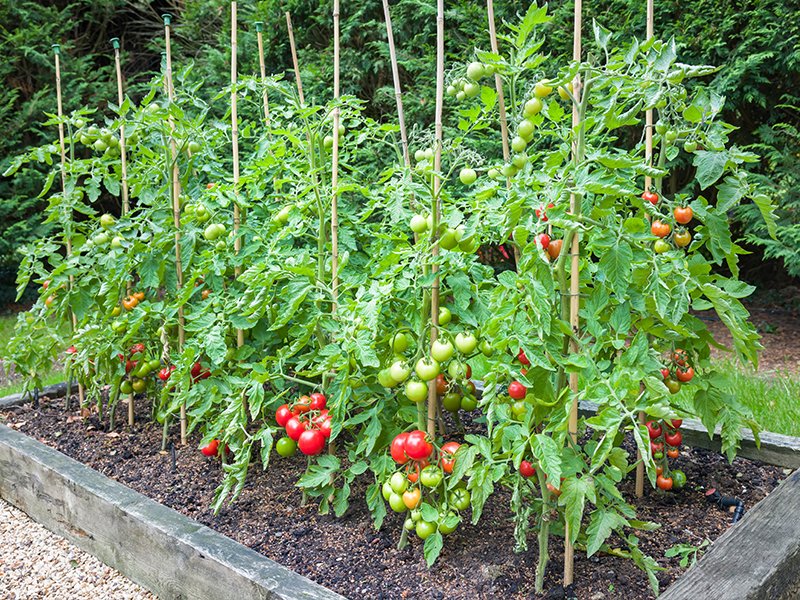
What do you need?
- Tomato seeds or starter plants
- Something to grow the plant in - this can be a grow-bag, a pot, a hanging basket (depending on your variety) or you can grow directly into the ground
- Compost - unless you're using a grow-bag, you'll probably need a good compost, preferably one designed for fruit & veg
- Support - for single stem tomatoes
- Feed - Tomorite is our best-selling tomato food
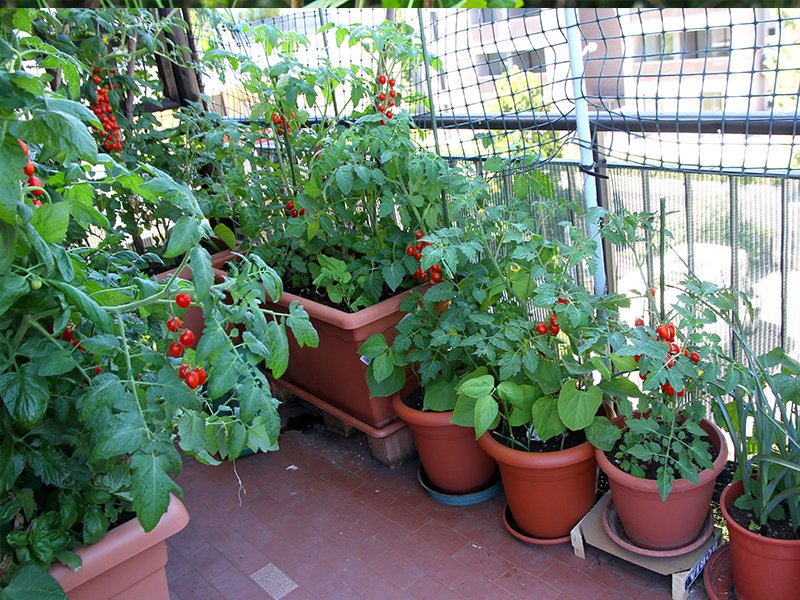
Which variety is best?
There’s many different varieties to choose from, but much will depend on the space available to grow the tomatoes and the type of tomato you prefer. In general terms, tomatoes are either grown on a single, upright stem or as a bush. If it’s your first time, we’d recommend that you begin with a bush-type.
Bush-type varieties such as ‘Tumbler’ and ‘Tumbling Tom Red’ are ideal for growing in pots or hanging baskets and produce lots of wonderful cherry tomatoes throughout the summer.
Upright varieties such as ‘Alicante’, ‘Moneymaker’ and ‘Shirley’ are all well-tried-and-tested if you’re looking for a good, full-size red tomato, whilst ‘Gardeners Delight‘ produces lots of cherry tomatoes on an upright stem.
There’s also a great selection of yellow tomatoes, beef-steak tomatoes and other distinctive varieties to choose from – so take your time, read the plant labels and pick the varieties that suit you, your family and your garden best.
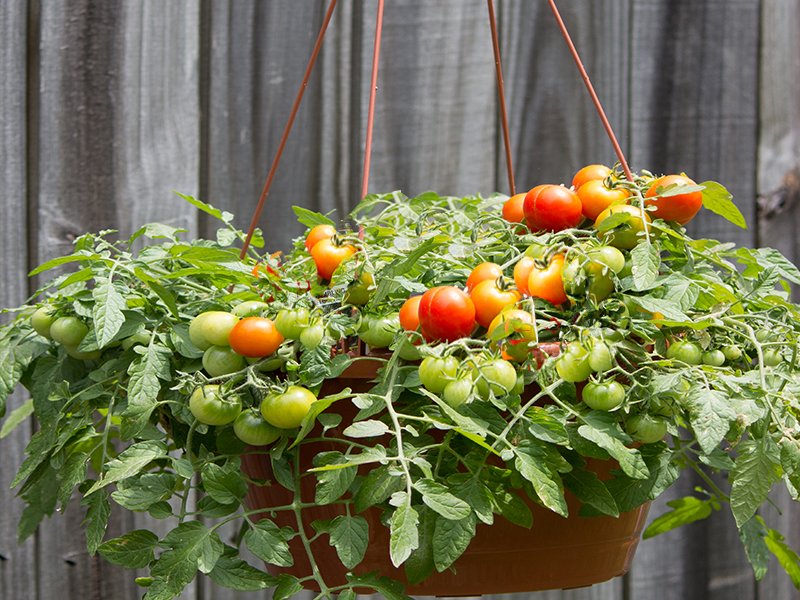
Growing bush tomatoes
As the name suggests, the main difference between bush and upright tomatoes is simply the way in which they grow. Bush tomatoes require less experience than those on single upright stems because there’s no need for training the stems or for side-shooting.
In general, bush tomatoes have a weeping habit, so they’re very well-suited to growing in patio pots, window boxes or hanging baskets.
You’ll still need to provide food and water (lots of it – and regularly!) but otherwise, just sit back, watch them grow and enjoy these wonderful tasty treats as they ripen!
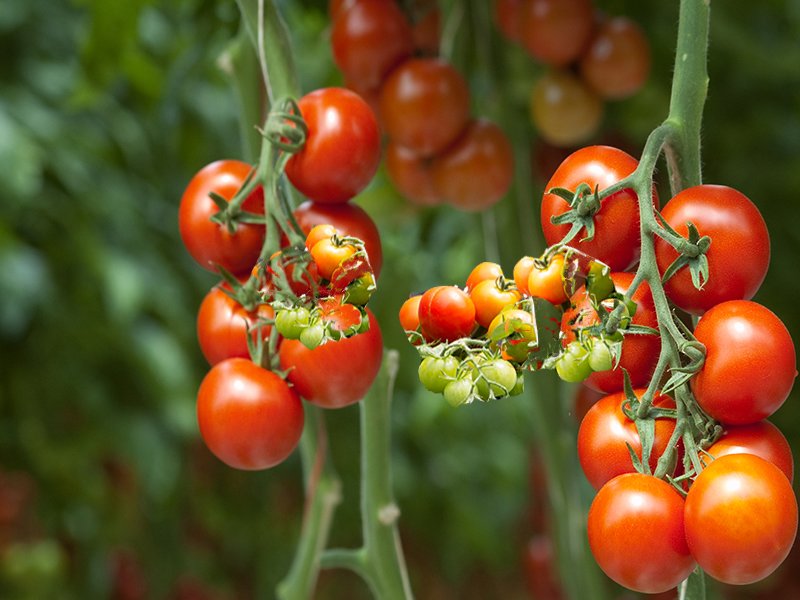
Growing upright tomatoes on single stems
Growbags are convenient for growing upright tomatoes but you can also grow tomatoes in a good-sized pot or directly into the ground. Always use a good compost in your pot, or for back-filling when planting into the ground.
As the plant grows, you will need to give it support so that the stem remains straight and doesn’t break with the weight of the tomatoes. You’ll also find that the plant will try to grow lots of extra branches – these are known as ‘side-shoots’. These little shoots appear in the angle between the leaf and the main stem, and you simply nip them out so the strength remains in the main stem. And as anyone who grows tomatoes will tell you, it is a job that needs done very regularly!!
Once you see your first bunch of yellow flowers appear, that’s your first tomatoes on the way! The flowers will disappear and in their place you’ll see the tomatoes begin to form. This bunch of tomatoes is called a truss, and you can then tell your friends that "the first truss has set"!
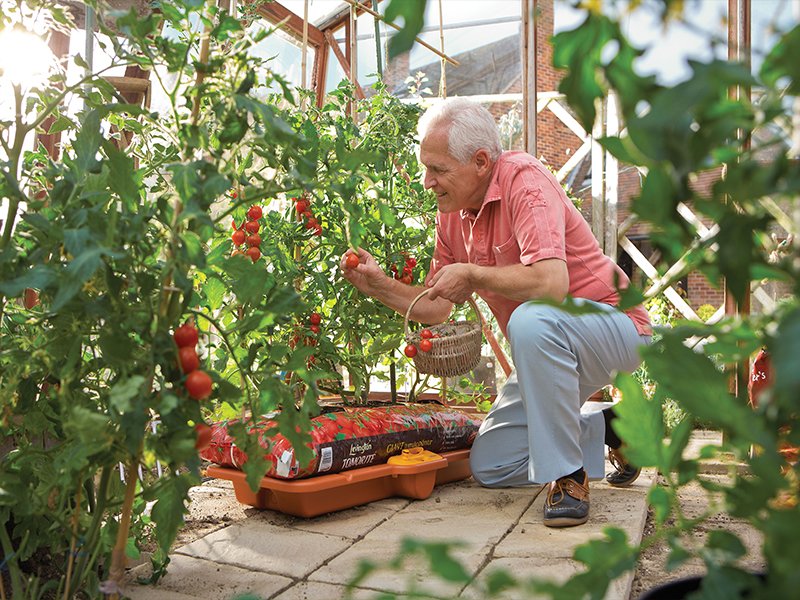
Watering
The most important thing about watering is to understand the regularity of irrigation that the plant needs before it is fruiting so that you have a regular, established routine that will continue throughout the development of the fruit. Uneven watering leads to uneven development and consequently split fruit which not only looks unsightly but can encourage disease.
Watering must be regular, although the amount of water and the frequency will vary. An easy way to work out your watering regime is to look and feel the leaves of the plant – if they’re sitting up nicely, they should be fine but if they’re looking and feeling limp, they need water.
Tomatoes are very hungry plants and once the tomatoes begin to set, they will need regular additional feeding – use a specialised tomato feed such as Tomorite which is easily applied while watering.

